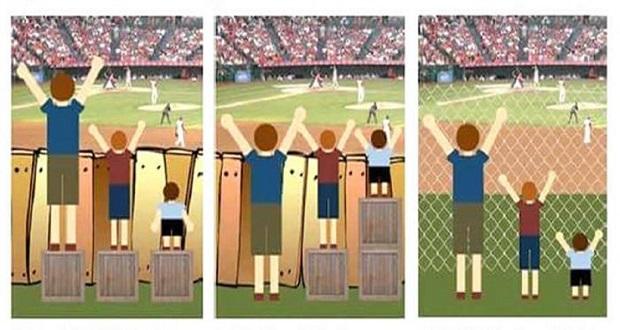What I found interesting is that they suggest that implementation of active learning that is "high intensity" had greater benefits on UR students; there was less of an achievement gap between UR and OR students. What is high-intensity active learning? High-intensity active learning is simply courses in which a greater proportion of class time is devoted to active learning activities. The greater amount of class time during which students are engaged in the application of their learning, the narrower the achievement gap between UR and OR students in STEM courses. The question is, does this mean that 100% of the time in active learning activities is the best? I don't think so. There is certainly a Goldilocks balance between the instructor orienting students toward a new concept (lecturing) vs having students discover the skill and knowledge themselves through pre-class assignments and in-class application. And this balance will be different for different teaching and learning contexts: year-level, discipline, student cohort. The master teacher will know how to gauge their particular context and how to balance lecturing with active learning to best meet the learning needs of their students.
So, we know that active learning can improve students' learning overall. And now it appears that under-represented students may benefit disproportionally when active learning is implemented in their classroom. As with all social issues and culture changes, there will be push back from those students who will learn well no matter what type of instructional strategy is implemented in their classroom. In addition, active learning did not erase the achievement gap between UR and OR students it only decreased the gap. Active learning clearly does not address all of the issues influencing students ability to be successful. But implementing active learning appears to be one way of addressing EDI issues in our classrooms.

http://www.theinclusionsolution.me/equity-vs-equality-eliminating-opportunity-gaps-education/
Resources
Freeman, S., Eddy, S. L., McDonough, M., Smith, M. K., Okoroafor, N., Jordt, H., & Wenderoth, M. P. (2014). Active learning increases student performance in science, engineering, and mathematics. Proceedings of the National Academy of Sciences of the United States of America, 111(23), 8410–8415. https://doi.org/10.1073/pnas.1319030111Theobald, E. J., Hill, M. J., Tran, E., Agrawal, S., Arroyo, E. N., Behling, S., … Freeman, S. (2020). Active learning narrows achievement gaps for underrepresented students in undergraduate science, technology, engineering, and math. Proceedings of the National Academy of Sciences, 117(12), 6476–6483. https://doi.org/10.1073/pnas.1916903117